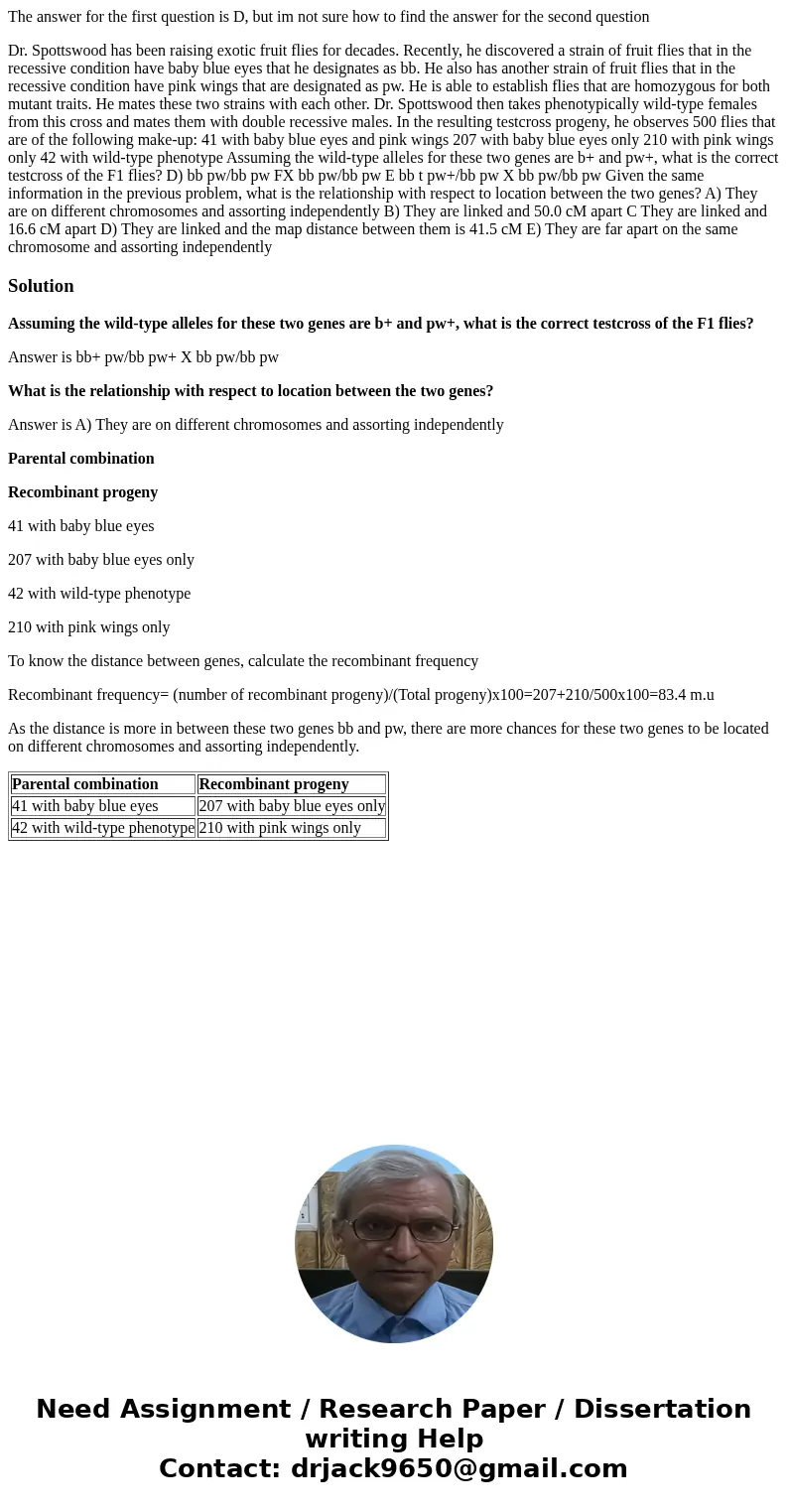The answer for the first question is D but im not sure how t
The answer for the first question is D, but im not sure how to find the answer for the second question
Dr. Spottswood has been raising exotic fruit flies for decades. Recently, he discovered a strain of fruit flies that in the recessive condition have baby blue eyes that he designates as bb. He also has another strain of fruit flies that in the recessive condition have pink wings that are designated as pw. He is able to establish flies that are homozygous for both mutant traits. He mates these two strains with each other. Dr. Spottswood then takes phenotypically wild-type females from this cross and mates them with double recessive males. In the resulting testcross progeny, he observes 500 flies that are of the following make-up: 41 with baby blue eyes and pink wings 207 with baby blue eyes only 210 with pink wings only 42 with wild-type phenotype Assuming the wild-type alleles for these two genes are b+ and pw+, what is the correct testcross of the F1 flies? D) bb pw/bb pw FX bb pw/bb pw E bb t pw+/bb pw X bb pw/bb pw Given the same information in the previous problem, what is the relationship with respect to location between the two genes? A) They are on different chromosomes and assorting independently B) They are linked and 50.0 cM apart C They are linked and 16.6 cM apart D) They are linked and the map distance between them is 41.5 cM E) They are far apart on the same chromosome and assorting independentlySolution
Assuming the wild-type alleles for these two genes are b+ and pw+, what is the correct testcross of the F1 flies?
Answer is bb+ pw/bb pw+ X bb pw/bb pw
What is the relationship with respect to location between the two genes?
Answer is A) They are on different chromosomes and assorting independently
Parental combination
Recombinant progeny
41 with baby blue eyes
207 with baby blue eyes only
42 with wild-type phenotype
210 with pink wings only
To know the distance between genes, calculate the recombinant frequency
Recombinant frequency= (number of recombinant progeny)/(Total progeny)x100=207+210/500x100=83.4 m.u
As the distance is more in between these two genes bb and pw, there are more chances for these two genes to be located on different chromosomes and assorting independently.
| Parental combination | Recombinant progeny |
| 41 with baby blue eyes | 207 with baby blue eyes only |
| 42 with wild-type phenotype | 210 with pink wings only |

 Homework Sourse
Homework Sourse